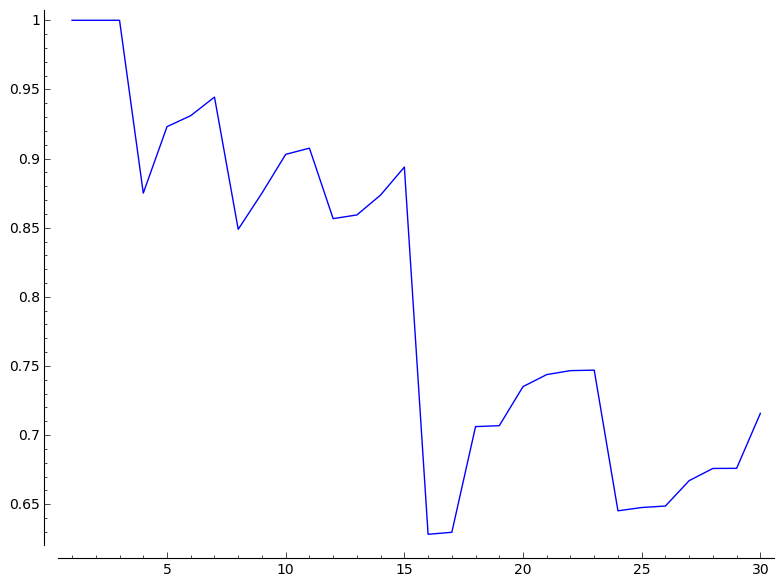Definition: Two inclusions of finite groups are equivalent, $(A \subset B) \sim (C \subset D)$, if: $(A/A_B \subset B/A_B) \simeq (C/C_D \subset D/C_D)$ with $A_B$ the normal core of $A$ in $B$.
Remark: The equivalence class of $(A \subset B)$ is the same that the conjugacy class of a transitive permutation group $G$ with $(A \subset B) \sim (G_1 \subset G)$.
Gap computation:
Up to equivalence, there are $40225$ inclusions of finite groups $(A \subset B)$ of index $[B : A] \le 30$.
Among them, $28798$ have a distributive lattice $\mathcal{L}(A \subset B)$ of intermediate subgroups.
So the ratio with such a distributive lattice is more than $70 \%$.
Let $p_n$ be such a ratio for index $\le n$.
Questions: Is $(p_n)$ convergent when $n \to \infty$?
If yes, let $\alpha = lim(p_n)$. Then $\alpha = 0$ or $0< \alpha < 1/2$ or $\alpha \ge 1/2$?
If $\alpha = 0$, what's the asymptotic analysis of $(p_n)$?
Here is a graph for $p_n$ with $1 \le n \le 30$:

